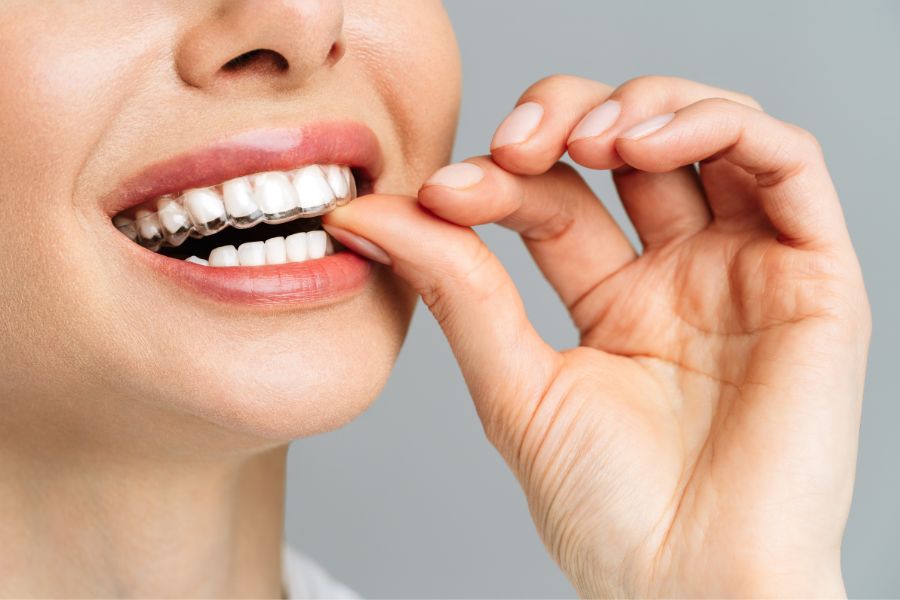Potential Challenges with Braces
Braces, with their brackets and wires, can trap food particles and make flossing a challenging task. The American Dental Association provides further insights on these challenges.
Braces, while effective, present their own unique set of challenges. The metal brackets and wires that correct your teeth’s alignment can often trap food particles, making the simple act of cleaning your teeth a much more complex process. Flossing in particular becomes a task of Herculean proportions, as navigating the floss through the maze of metal in your mouth can be time-consuming and, in some cases, frustrating. This buildup of food particles, if left unaddressed, can lead to issues like plaque buildup and gum disease. For more information on the potential challenges posed by braces, the American Dental Association provides a comprehensive guide here.
The Intricacies of Living with Aligners
Aligners offer a more aesthetic and less noticeable alternative to braces. However, they come with their own set of challenges. Being removable, they require a strict and consistent cleaning routine. Neglecting to clean your aligners can lead to discoloration of the appliance and can also contribute to bad breath and other oral health issues.
Mastering Brushing Techniques for Braces
Ensuring Cleanliness of Your Aligners
Aligners should be cleaned using a soft toothbrush and non-abrasive toothpaste to avoid scratching their surface. It is also important to avoid using colored or scented soaps to clean your aligners, as these can leave a residue and cause discoloration.
Navigating Flossing with Braces
The Importance of Regular Dental Check-ups
Regular dental check-ups and cleanings are vital for maintaining oral health, but they become even more important when you’re using braces or aligners. These visits allow your dentist to monitor your progress and address any potential issues promptly.
Navigating the world of oral health with braces or aligners can be a complex journey, but it’s a worthwhile endeavor for the promise of a straighter, healthier smile. While the challenges associated with braces and aligners are real, they can be mitigated with the right knowledge and a committed approach.
The key is to remain vigilant about oral hygiene, incorporating regular brushing, flossing, and cleaning of the orthodontic appliances into your daily routine. Regular dental check-ups are also crucial to ensure that potential issues are addressed promptly.

